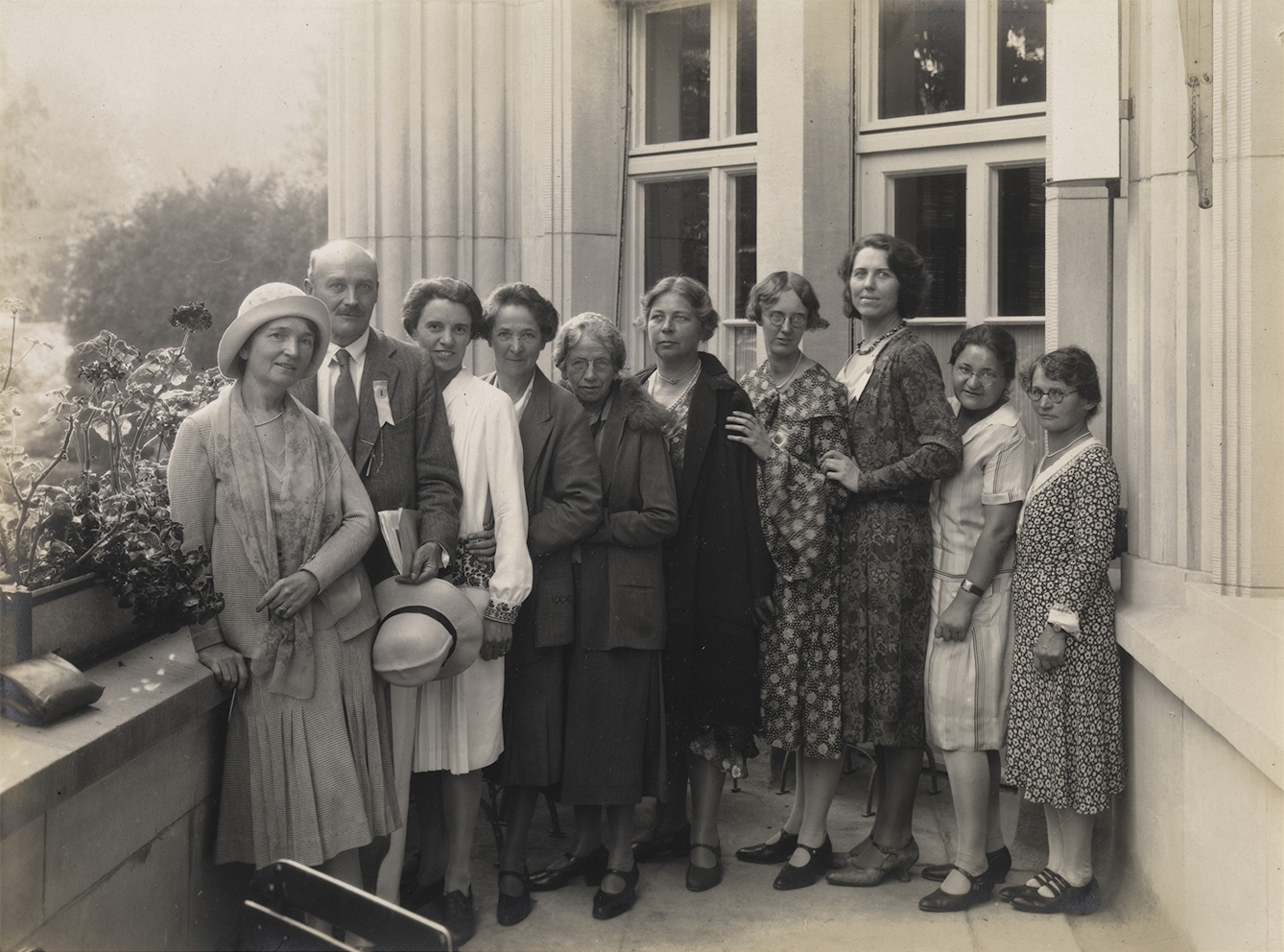Since her first appearance in comic book form in 1941, Wonder Woman has gone from strength to strength. Discover more about the women who inspired an icon: a story of bondage, bracelets and birth control.
The DC Comics character Wonder Woman was formed out of clay back in 1941 in the pages of All Star Comics, written by William Moulton Marston under the pseudonym Charles Moulton. Marston, a psychologist, was the creator of the systolic blood pressure test, which went on to became an important component of the modern polygraph, or lie detector test. This was thanks to his wife Elizabeth Holloway Marston, who first brought up the link between her emotions and blood pressure with Marston, telling him that when she got “mad or excited, her blood pressure seemed to climb”.
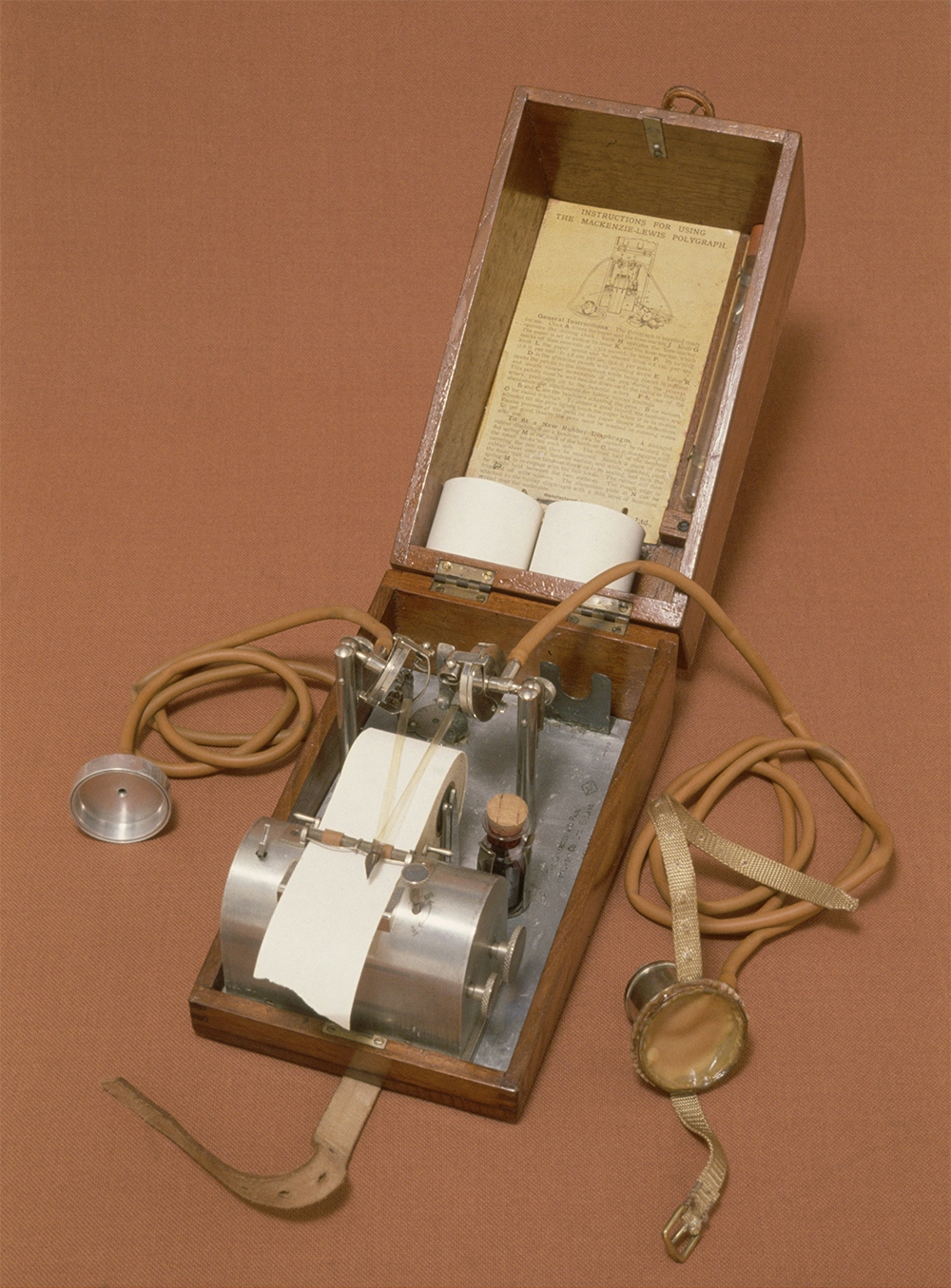
An ink-writing polygraph, developed from William Moulton Marston’s lie detector.
Unlike Wonder Woman’s famous Lasso of Truth, the invention Marston contributed to remains of questionable utility. In fact, many things about Marston and his original Wonder Woman stories were controversial: although he considered women superior to men in many ways (for example, in terms of honesty and the speed/accuracy of their work), when his depictions of people tying up or otherwise restraining each other raised a few eyebrows, he claimed that “women are exciting for this one reason – it is the secret of women’s allure – women enjoy submission”.
‘Submission’ as a behavioural trait was part of Marston’s DISC theory of personality, outlined in his 1928 book ‘Emotions of Normal People’. To him, submission was a noble practice that women were more capable of. He stated, “only when the control of self by others is more pleasant than the unbound assertion of self in human relationships can we hope for a stable, peaceful human society.” Additionally, any eroticism inferred by readers about the bondage trope in Wonder Woman was justified too, as Marston felt that only by seeing submission as something pleasurable would people understand its benefits.
In pictures
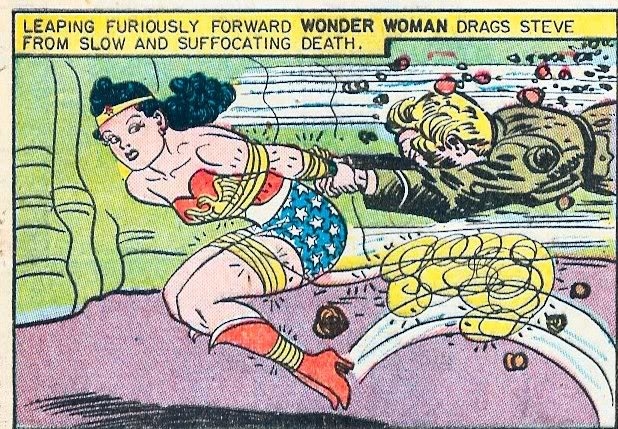
Wonder Woman in her first feature.
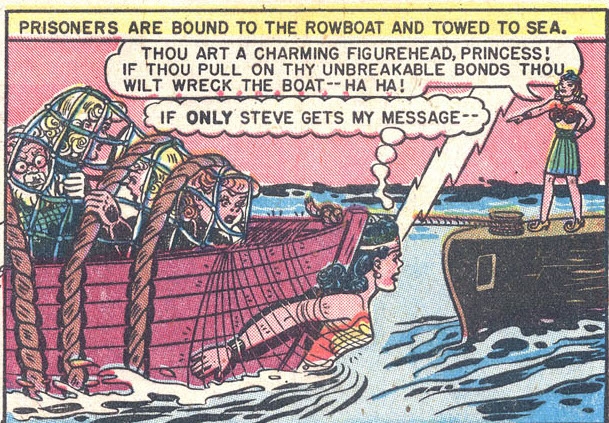
Wonder Woman in peril.
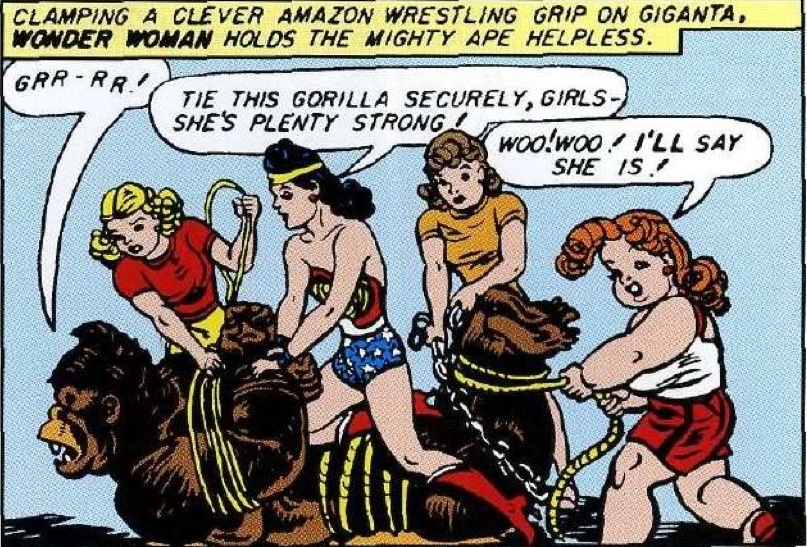
Displaying her Amazonian strength.
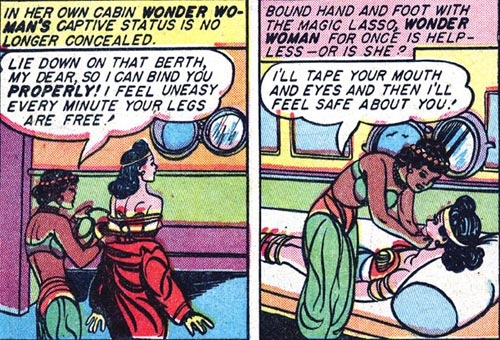
Bound and submissive – for now.
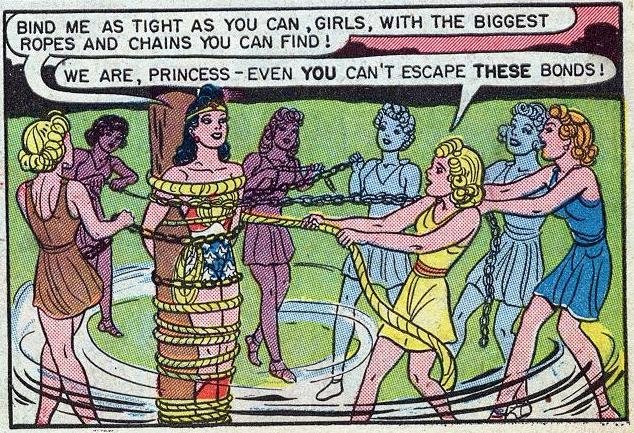
The “noble practice” of submission.

When a man binds Wonder Woman, she becomes as weak as ordinary women.
Interestingly, the early stories written by Marston often showed Wonder Woman losing her Amazonian strength if she was chained up by a man, then freeing herself from those chains “to signify her emancipation from men”. Chains, of course, played an important role in the suffrage movement Marston witnessed first hand.
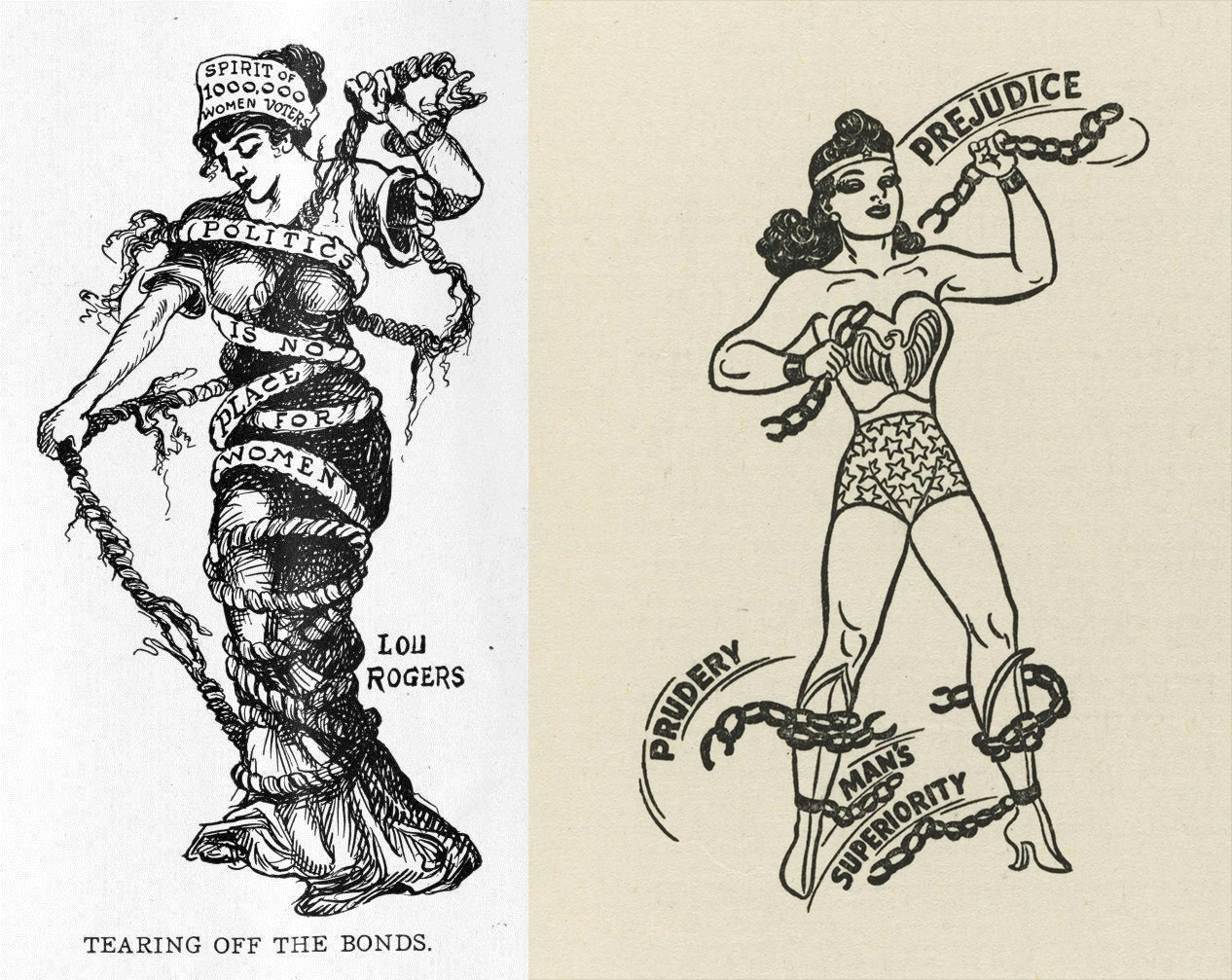
Left: a political cartoon by Lou Rogers, 'Tearing Off the Bonds', which featured in a 1912 issue of the satirical magazine Judge. Right: a drawing of Wonder Woman by H G Peter, dating from 1943.
Wonder Woman was imbued with both the suffragism and feminism Marston encountered in the women who touched his life in various ways. This can be traced back to 1911, when he was a freshman in Harvard. He heard British suffragist Emily Pankhurst (who had been invited by the Harvard Men’s League for Women’s Suffrage) speaking at a dance hall next to campus, as she was banned from speaking on the campus itself.
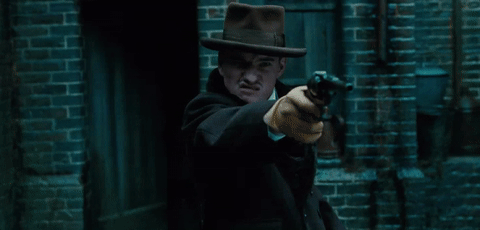
Wonder Woman: caring, selfless and very, very quick.
And it was Marston’s wife, Elizabeth Holloway, who was partly responsible for the creation of Wonder Woman herself. As a counterpoint to the glut of (all-male) superheroes in the 1940s, Marston wanted to create a hero who, instead of using brute strength or outlandish gadgets, conquered his foes with love. Holloway liked the concept, but insisted the hero be a woman.
An icon for everyone
Feeling that “even girls don’t want to be girls” because they weren’t interested in being tender, sensitive and peaceful, Marston created Wonder Woman as an example of how he thought modern women should act and behave: he wanted to show her as strong and powerful, a competent leader who was also feminine and beautiful. By creating a character with the qualities he thought girls admired (strength) and qualities he thought made women special (peace-loving and submissive), he hoped to create an icon everyone could look up to.
The influence important women had over Marston’s work is clear. In those early days, Wonder Woman was surrounded by her sisters at the Holliday College (led by her sidekick Etta Candy), who would tag along on her various adventures and offer support. The Holliday girls wore sweaters bearing an H logo, which fused Holloway (Elizabeth’s surname) and Mount Holyoke, the first US women’s college, a suffragist hub and Elizabeth Holloway’s school. Holloway studied psychology and law, and she was an editor for 'Encyclopaedia Britannica'. Her favourite book was about Sappho and her poetry.
The couple’s unorthodox private life further inspired Marston’s work. In 1926, Marston gave Holloway an ultimatum: either his androgynous research assistant, Olive Byrne, would live with them, or he would leave. The couple had been part of a threesome before: according to Holloway “no one knows more about the production of Wonder Woman than Marjorie W Huntley”. Huntley was a suffragist librarian who was part of the couple’s first threesome, and remained a regular visitor to their home.

Wonder Woman’s bullet deflecting gauntlets inspired by Olive Byrne.
Polyamory and practicality
Holloway faced the choice between motherhood and professional life, so Byrne’s arrival suited everyone: Byrne would raise her own and Elizabeth’s children by Marston, and Elizabeth would provide for the family of eight while Marston looked for permanent employment.
While Byrne is often thought to have inspired Wonder Woman’s physical appearance (there is a clear resemblance), Marston himself only ever said that the pair of bracelets she regularly wore made it into his comic, eventually becoming Wonder Woman’s bullet-deflecting gauntlets. When Marston died in 1947, Byrne and Holloway continued to live together afterwards.
Marston’s close ties to women involved in various feminist movements only added to the Wonder Woman character he created. Olive Byrne once said that to know about Wonder Woman all you had to do was read ‘Woman and the New Race’ by her aunt, Margaret Sanger. Margaret’s sister (Byrne’s mother) Ethel was the first woman to go on a hunger strike when she and her sister were arrested for opening America’s first birth-control clinic; Ethel and Margaret eventually went on to found Planned Parenthood.
In pictures
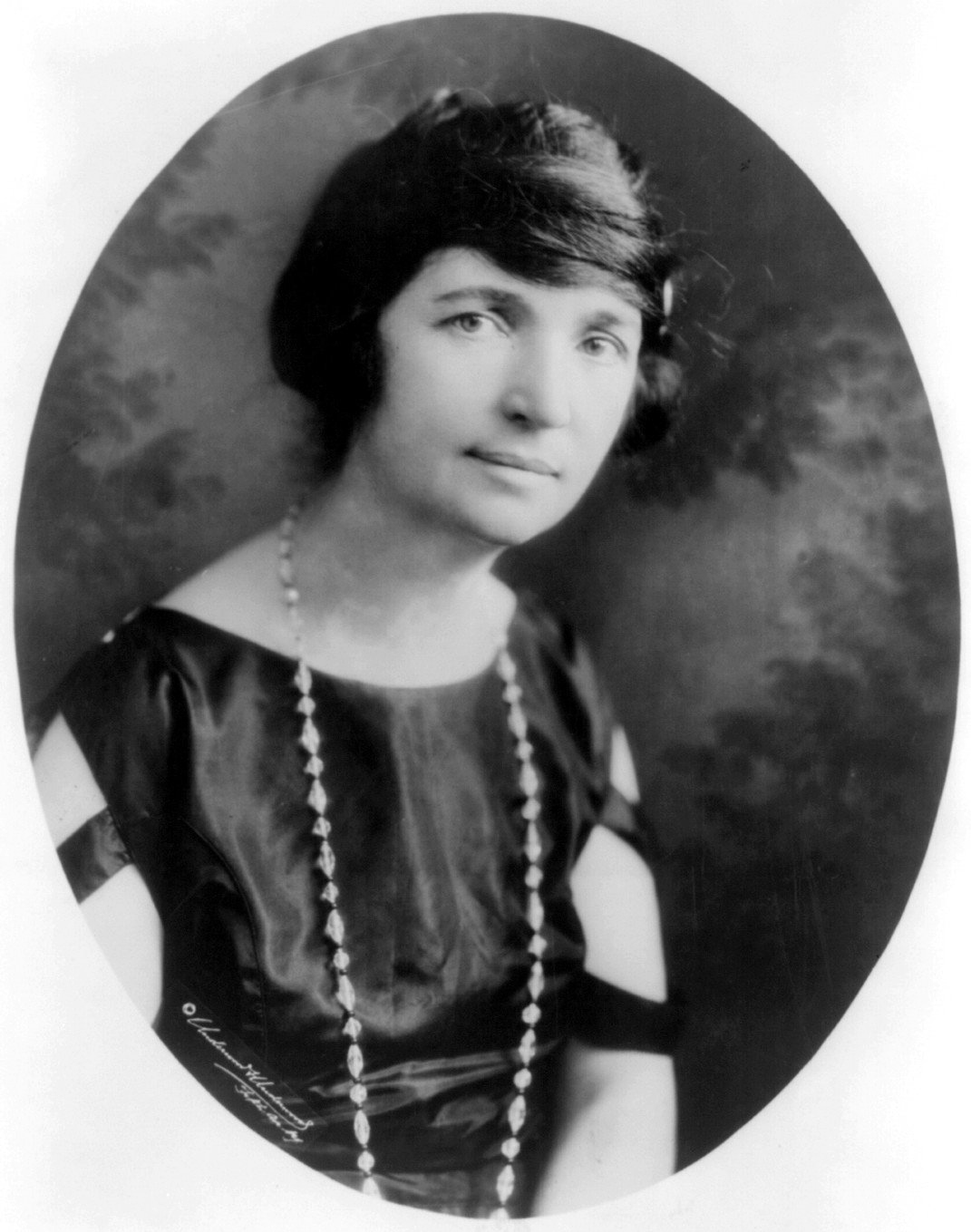
Margaret Sanger.
The Zurich Birth Control Conference, Sept 1930. Margaret Sanger is on the far left.
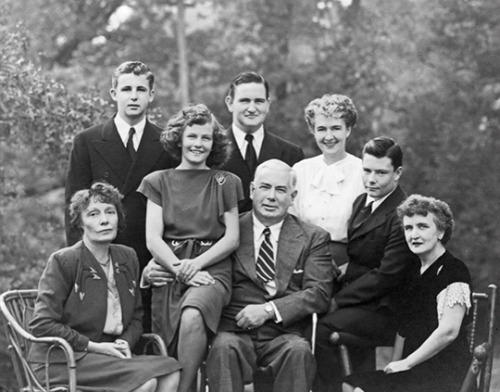
Left to right: Marjorie Wilkes Huntley, Byrne Marston, Olive Ann Marston, Pete Marston, William Moulton Marston, Olive Byrne, Donn Marston, and Elizabeth Holloway Marston.
With each decade that followed, Wonder Woman has evolved to reflect and absorb the gender constructions of the times as different writers have taken over her stories: from the patriotic 1940s through to the plain-clothes spy years in the 1970s, and on to the more overtly feminist and queer themes of the late 1980s and 2000s.

Wonder Woman on the Western Front.
Wonder Woman’s ongoing mission for peace, love and equality is still strongly connected to Margaret Sanger’s philosophy that “love is the greatest force of the universe”. It might sound cheesy, but even in 2017, in her first big-screen outing (75 years after her comic book debut), it’s her own capacity to love (and the love she sees in others) that inspires Wonder Woman to fulfil her potential. And the success of the film itself reflects Wonder Woman’s Amazonian strength: its director Patty Jenkins holds the record for the highest-grossing movie directed by a woman.
About the contributors
Elissavet Ntoulia
Elissavet Ntoulia is a Visitor Experience Assistant at Wellcome Collection.

